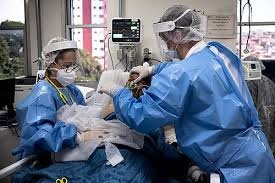MANILA, Philippines — The Department of Health (DOH) has moved swiftly to quell public apprehension, confirming there are absolutely no plans to impose a lockdown in any part of the country in response to the current rise in flu or influenza-like illnesses (ILI). DOH Secretary Ted Herbosa emphasized this point during a press briefing on Friday, directly countering circulating rumors and clarifying the true nature of the country’s current health situation.
Secretary Herbosa was unequivocal in his denial of any forthcoming restrictive measures, firmly stating: “There is no planned lockdown; that is fake news. What we have is the seasonal respiratory illnesses, so it’s not a flu outbreak. We do not have a flu outbreak.”
The DOH chief stressed that the increase in cases being reported is a normal, predictable occurrence tied to the country’s climate cycle, rather than an extraordinary public health crisis demanding severe intervention.

The Science of Seasonality: Understanding the ILI Surge
Herbosa clarified that the Philippines is simply moving through its predictable ILI (influenza-like illnesses) season. The term ILI is a broad public health category encompassing a range of common respiratory ailments.
“It is our ILI (influenza-like illnesses) season… It has many diseases. And these are diseases like cough, cold, flu and all others similar to that. That spreads very fast during rainy season,” he explained, noting that the DOH is actively monitoring the situation.
This crucial distinction between a seasonal increase and an outbreak dictates the government’s response strategy. An outbreak implies a sudden, localized surge in a specific, usually virulent, disease above expected levels, which would necessitate emergency measures. Since the current rise is distributed across many common respiratory viruses and aligns with expected seasonal patterns, a lockdown—a highly disruptive measure—is considered unwarranted.
“We don’t have an outbreak from a single virus, so there is no need to declare a lockdown,” the official concluded, reinforcing the decision to avoid non-pharmaceutical interventions (NPIs) as drastic as community-wide lockdowns.
Proactive Health Strategy: Masks and Isolation as Key Tools
While dismissing the need for mandatory lockdowns, Secretary Herbosa underscored the importance of individual responsibility and proactive public health measures to mitigate viral spread during the ILI season.
The DOH’s official recommendation focuses on two voluntary actions for individuals experiencing influenza-like symptoms:
-
Wearing of Face Masks: Utilizing masks in crowded or indoor public settings to prevent the respiratory spread of illness.
Self-Isolation When Sick: Staying home from work or school to avoid transmitting the illness to others.
“That’s the public health recommendation because it’s our season for these influenza-like illnesses, which you get by respiratory spread. Maybe if you’re sick, don’t go to work, don’t go to school,” he pointed out. He explicitly clarified that these measures are optional and voluntary recommendations, not mandatory policies or restrictions, providing a clear boundary between guidance and compulsion.
Commending DepEd’s Precautionary Move
Secretary Herbosa extended his commendation to the Department of Education (DepEd) for its recent decision to suspend face-to-face classes in public schools in Metro Manila from October 13 to October 14. This temporary shift to alternative learning methods was triggered by two factors: the rising number of ILI cases among students and the need to address the impacts of recent earthquakes in certain areas.
Herbosa viewed the suspension as a positive, protective measure: “It’s actually also good because, I think the kids, if they don’t go to school, won’t infect each other.” He elaborated on the potential public health risks children pose to vulnerable populations: “My fear is that kids will get infected; they recover after 3 to 5 days, but if they bring it home to a grandfather, grandmother, or someone who’s on dialysis, they might die.”
Acknowledging the importance of educational continuity, he affirmed his support for flexible learning: “So in a way, that’s okay. I’m not against doing alternative methods of education.”

Statistical Clarification: Fewer Cases Than Last Year
To further dispel the notion of an escalating crisis, Secretary Herbosa provided crucial comparative statistics, clarifying that the current increase in ILI cases is lower than the figures recorded during the same period last year.
Contrary to popular perception fueled by media reports of the current seasonal increase, Herbosa stated: “For the month of September, our cases of ILI were over 155,000 last year. This September, it just ended, it was only 133,000. So less. It’s not more.”
This data confirms that the current respiratory illness activity, while visible, is not trending toward an unprecedented surge. The DOH uses these year-on-year comparisons to accurately manage public expectations and ensure resources are allocated appropriately. By focusing on vaccination campaigns, targeted monitoring, and voluntary public health measures, the DOH aims to navigate the ILI season with minimal disruption, standing firmly against the implementation of economically and socially damaging lockdowns.





